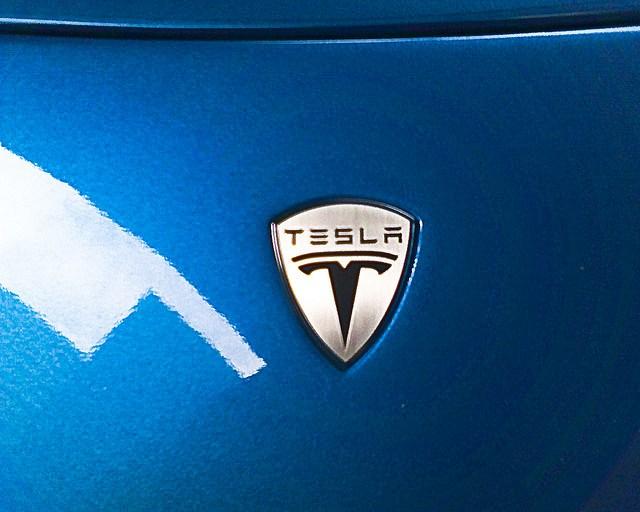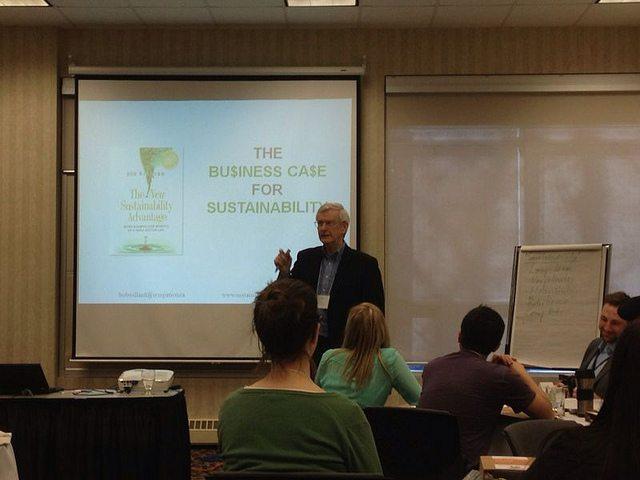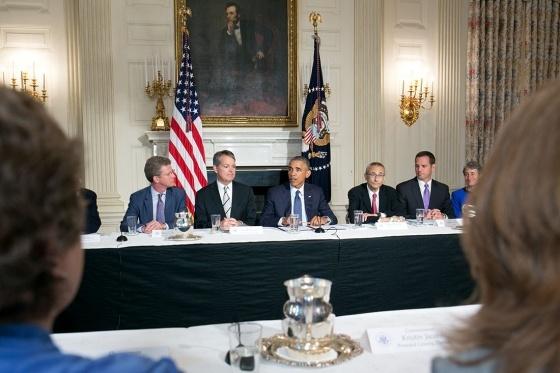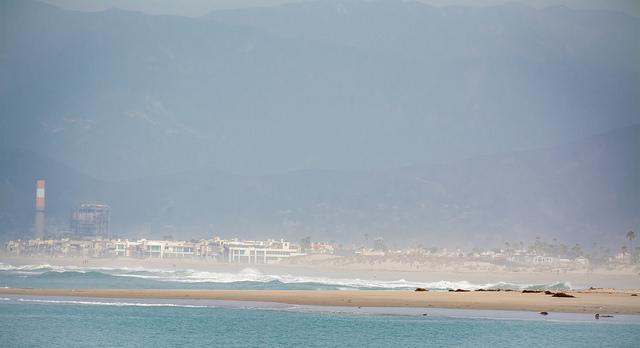Detroit Suspends Water Shutoffs After Protests and U.N. Condemnation


Following massive Friday protests that led to nine arrests, the city of Detroit announced on Monday it is suspending its sweeping water shut-offs for 15 days to launch a massive campaign to inform city residents of water assistance.
It's difficult to get a full picture of the water crisis going on in Detroit. To date, the city has cut off water service to about 16,000 households, with another 324,000 overdue water and sewage accounts facing potential shut-off. That's over 40 percent of the city. In response, the United Nations Human Rights Council recently condemned the city's water shut-off campaign as a human rights violation and public health concern, as thousands of low income Detroit households and families are facing the absence of a basic necessity for every living creature on planet Earth.
The U.N. special reporter on extreme poverty and human rights, Leilana Farha, added that if it turned out the water shut-offs targeted African Americans it could be in violation of treaties the U.S. has ratified. It's important to note that Detroit's population is 83 percent African American.
It's also worth pointing out that Michigan is the only state entirely within the Great Lakes water basin and surrounded by some of the largest fresh water lakes in the world. It's not like water is scarce here.
But what the heck? The Detroit Water and Sewage Department is shutting off water for non-payment in a city that's billions of dollars in debt. What do people expect, right? Once you reach the $150 delinquency amount, your water goes off.
Unfortunately, Detroit -- long at the epicenter of industrial decline, offshoring and a crumbling auto industry -- has experienced massive poverty, with more than 40 percent of the population at or below the poverty line. The people are broke. The city is broke. And while the city claims there are plenty of resources for people facing water shut-offs, they admit that they're kind of short-staffed in the Notifying People of a Shut-Off department.
But surely these water delinquencies aren't a new thing, considering the high poverty rate. In fact Joanne Watson, former Detroit city council member, said that the city passed a payment plan for low-income households -- but never implemented it.
So if the water delinquencies aren't a new thing, why is the water department cracking down now? Why NOW? Why did the city shell out 5 million bucks for a private contractor to shut off water NOW?
The city has been pushing to fast-track privatization of the water and sewer departments. So it certainly wouldn't do to have thousands of unpaid water bills on the books when searching around for a private contractor to take the reigns.
Detroit is currently in bankruptcy proceedings, and its financial fate is in the hands of an emergency financial manager and a bankruptcy judge.
In March of 2013, Michigan Gov. Rick Snyder appointed an emergency financial manager for the city of Detroit. What's an emergency financial manager? They're a last-ditch effort for cities hit hard by dwindling populations and the decline of a manufacturing tax base. They are appointed managers who trump the decisions of the city's elected officials in order to bring the city out of debt, who often turn to privatizing many of the city's services and overturning contracts with workers.
Whether the practice is successful or not is highly questionable. The emergency financial manager for the Muskegon Heights school system in Muskegon, Michigan privatized the entire school district, awarding a three-year contract to the for-profit firm Mosaica Education. The firm was still unable to pay the teachers, unable to maintain the school buildings and unable to meet their own stated goals. As a result, it was ousted after the first year.
Many of the services privatized by these emergency financial managers tend to be sub-standard and lead to greater problems with little financial gain. When the city of Detroit is called out by the United Nations for creating a public health hazard and human rights violation, it should be a pretty big clue that you're not serving the people.
Image credit: Eric Justian
Elon Musk Lays Out Future Plans for Tesla


Elon Musk continues to defy the conventional wisdom of the armchair pundits, who claim that widespread adoption of electric cars is still decades away. They claim electric vehicles (EVs) are impractical, unappealing, too expensive, with no charging infrastructure, plus they take too long to charge. One by one he has removed these barriers with his Tesla cars.
His first two models are selling well, despite efforts on the part of several states to block the company's direct-sale model. Despite this, and the lofty price tag, Teslas are consistently the top-selling electric cars on the market. (We’ll come back to that price issue in a minute.)
Tesla has set up a supercharger network across the U.S. that will allow transcontinental drives (as long as you follow certain routes). The supercharger technology is exclusive to Tesla cars which are configured to accept higher current levels, allowing them to charge relatively quickly, at least compared to other EVs.
Still, it can take an hour or more to charge up, more time than most people want to spend at a gas station. Sure, you can stop for lunch, if that fits into your schedule, but we Americans tend to be busy people who are in a hurry as often as not. Tesla has an answer to that, too.
If you had a battery that would last as long as one were willing to drive in a day, then it wouldn’t be a problem. You just charge up at night, wherever you are, ready to go again the next day. In a recent interview with AutoExpress, Musk said: “It will be possible to have a 500-mile range car. In fact we could do it quite soon, but it would increase the price. Over time you could expect to have that kind of range.”
In fact, Tesla is planning an upgrade to its first car, the Roadster, that will substantially increase battery range from its current 245 miles.
“The Roadster had an old generation battery,” he told AutoExpress. “We’ll upgrade it to a new generation battery pack and it should have a range of about 400 miles, which will allow you to drive from LA to San Francisco non-stop.”
How many people are going to want to drive more than 500 miles in a day? Even if you did, you’d probably be happy to stop somewhere for an hour, where you and your car can get something to eat. Once that capability is available, it’s going to really put a dent in sales of combustion vehicles. For me personally, the only thing that would stop me at that point would be price.
This brings us to the next point: Prices are coming down. Musk described the outlook for the new Tesla Model 3. You can see pictures of it, which, at $35,000, is priced to compete with the new BMW 3 series.
Now, $35,000 sounds like a lot of money for a car, for those of us who are not in the BMW league. But when you consider the fuel savings you will realize over the car’s life, these vehicles turn out to be surprisingly affordable.
Take an average gasoline-powered vehicle, which today gets 29 miles per gallon, and compare it to a Tesla Model S, which gets the equivalent of 95 mpg, and drive each car for 100,000 miles. Based on today’s national average fuel prices, you will save $11,458 over the life of that car. When you add to that the fact that electricity prices have remained stable compared to gasoline prices (which were $1.50 back in 2001), the savings could be considerably greater.
The Model 3 will be unveiled in 2016 and available for sale in 2017. It is expected to be about 20 percent smaller than the Model S and based on an entirely new platform. The car will have a range of more than 200 miles and strong performance like the Model S. Says Musk, “We want people to fall in love with their car and look forward to driving it.”
Tesla also announced plans for an R&D center in the U.K., which is expected to contribute to the new car.
Image credit: Randychiu: Flickr Creative CommonsRP Siegel, PE, is an author, inventor and consultant. He has written for numerous publications ranging from Huffington Post to Mechanical Engineering. He and Roger Saillant co-wrote the eco-thriller Vapor Trails. RP sees it as his mission to help articulate and clarify the problems and challenges confronting our planet at this time, as well as the steadily emerging list of proposed solutions. His uniquely combined engineering and humanities background help to bring both global perspective and analytical detail to bear on the questions at hand.
Follow RP Siegel on Twitter.
Shared Value: Double the Value?


By Lars Moratis and Ronald Jeurissen
The debate over the creating shared value (CSV) concept has recently gained traction after several years of relative silence since Porter and Kramer published their well-received Harvard Business Review article. While academics Dirk Matten and his colleagues have criticized CSV for its unoriginality and conceptual superficiality in a stinging California Management Review article, practitioners welcomed the concept -- as it anchors corporate social responsibility (CSR) within a tradition of strategic management and provides an appealing, fashionable label that captures the essence of business-case approaches to CSR.
It has also been argued that CSV should be an integral part of business school curricula. Interestingly, the aspects of instrumental versus ethical CSR and the lack of interaction between business and academia have hardly received any attention in this debate.
Stating that CSR may “unite the business world and other parts of society in solving social problems," professors Luetge and Von Liel have recently argued in the Financial Times that CSV should be an integral part of management education. They rightfully note that (future) managers should be trained in identifying and exploring win-win relationships between business and society, instead of viewing this relationship as a trade-off. Indeed, companies worldwide are increasingly recognizing the win-win opportunities between business and society. Other institutional actors, such as governments and non-governmental organizations, are making CSV part of their strategic agendas, too. Cross-sector partnerships have emerged to address some of the most pressing social problems and sustainability challenges by combining the competencies and resources of the actors involved.
The coalescence of business and social value is unquestionably a strong point of CSV, but there is an ethical downside to it as well. Essentially, as an example of ‘instrumental CSR approaches,' CSV argues that profit maximization is a function of addressing a company’s social responsibilities. As such, it is characterized by an ethical detachment and a neglect of the societal necessity of moral motivation. In addition, and somewhat similar to the claim that Porter and Kramer make that CSV represents “a higher form of capitalism," morally-motivated CSR offers a deeper sense of purpose for companies and individuals working in them.
Consequentially, it may even offer an enriched sense of purpose for business schools having been under intensified scrutiny as the hallmarks of capitalism. Management education should hence integrate this critical perspective on CSV as much as business schools have the responsibility towards both business and society to train (future) managers in recognizing the win-win opportunities such instrumental approaches provide. Integrating CSV in MBA curricula without this perspective only represents half the value of viewing the modern role of business in society.
But there is one other important side to this story, still: The controversy over CSV is an illustration of the lacking relevance of academia for the corporate world. While we agree to a large extent with the arguments of management scholars Matten c.s. that the CSV concept is hardly an original advancement of existing CSR theory, academics should realize that if it weren’t for Porter and Kramer, strategic perspectives on the mutual advancement of business and society would probably be far less popular in business than it is now.
Capitalism is a deeply paradoxical institution, as Adam Smith acknowledged when he introduced the perennially puzzling metaphor of the invisible hand. The market works in ways that economic actors themselves do not always intend, nor always understand. In this context, CSV offers double value: It propagates the symbiotic value-creation processes between companies and the societies in which they operate and has contributed to lifting CSR thinking from the academic confines into business reality.
Image credit: Emilio Quintana, Flickr
Lars Moratis is an experienced CSR consultant and researcher and a doctoral candidate in CSR at the Open University the Netherlands. Ronald Jeurissen is professor of business ethics at Nyenrode Busines University in the Netherlands.
Kung Fu and the Art of Living in Systems


By Jeremy Mathieu
I have been training in Kung Fu and Tai Chi for 10 years now. That makes me a beginner in that field, as the traditional Chinese martial arts are pathways of cultivation that take a lifetime to learn and grow into.
A student would traditionally follow the master for years to learn the style, by repeating set movements and absorbing the way the master lives, thinks and talks. Complete devotion would be expected of the student, for by taking on the responsibility of learning a style, he or she becomes part of a lineage -- an unbreakable chain connecting the past teachers to the future generations. The student holds the responsibility to learn well so that he or she can one day pass the style correctly onwards.
This traditional concept of filial piety is central to the practice of martial arts, giving the student a place within a wider system. It can be difficult for modern westerners to grasp and to accept. Seeing ourselves as independent individuals is so closely linked to our ideal of unrestricted personal freedom.
Through our current social and environmental crises, we are starting to see the limits of this mindset of separation and unrestricted individuality. Many in the sustainability movement have started to realize how interdependent we truly are, with human systems connecting us all economically, politically and culturally, while being fully embedded into natural systems.
We are part of those systems, those physical and social webs of life. While they could be thought of as a stifling limitation to our ideal of freedom, being mindful of our interconnections allows us to take our place within those systems more responsibly. I would argue that we can learn from martial arts to realize ourselves even more completely as individuals, by becoming more mindful of our participation within all these systems. Their connecting chains can help us go higher and further together, rather than keeping us prisoners.
Chinese martial arts are grounded in Daoism, Confucianism and Buddhism. All of which are disciplines of practice, geared towards self-transformation rather than the search for an objective explanation of a world beyond our experience. They bring the body and the mind together as an unbreakable whole. No glorifying of the mind and seeing the body as an aesthetic bystander that can be upgraded by going to the gym and buying fancy new clothes. Nor is the body somehow dragging us down to unholy and imperfect material realms. The practice of martial arts brings the body to the front. It becomes alive! Through the hardship of training, the students develop a renewed awareness of their bodies. It is experienced as the seat of our senses and perceptions, as well as our first point of contact with the natural world.
This process of cultivation does not come smoothly or easily. The changes we experience can be quite deep, varied and challenging. We encounter conflict at every turn and staying on this path takes discipline, dedication and a lot of patience.
The internal turmoil comes from the need to take responsibility for all the outcomes in our lives. No more excuses or blaming others. The students have to learn to be mindful of how they prioritize their time, giving training and their overall progress in life the right amount of care, and not letting escapism or activities that do not enrich their lives proliferate beyond measure.
We also learn to reconnect to the various parts of our lives to build more integrity, more ‘wholeness.' When training seriously, it becomes harder and harder to leave parts of ourselves at reception when arriving at work. We seek integration and not dispersion. All of these teach us the hardest of all types of honesty, the one in which we have to be honest with ourselves. Letting go of our illusions and acting in full congruence with ourselves.
Then we start sparring and experiencing a more obvious form of conflict. By interacting with another person in a controlled, semi-contact fighting environment, we learn a whole new level of humility. Mind and body learn to work ever more closely together, to sense the environment and react accordingly. I know of no better incentive to learn and grow than knowing life or death depends on how skilled you are, as at the origins of martial arts. We learn strategies and techniques, giving us the tools to deal with any opponent, any situation.
This is the most visible part of the art of warfare, the direct confrontation between two people or two systems. But another level underlies it: The conflict between our inner ideals and what is actually happening in our world. We test our character and our ability to realize our potential. Our quest for ‘silver bullet’ routes to victory soon shatters under the recognition of the constantly evolving and changing nature of the opposition. We are now on a never-ending road to self-improvement, constantly testing ourselves against a live and organic environment.
As we become more awake to our environment, we encounter yet another level of conflict – the result of forces that are beyond our immediate ability to solve. Global warming, economic crises, the rise of nationalism: These are all examples of conflicts that are bigger than any of us. Their violence can shatter lives and break communities apart. Their scale is a reminder that our wellbeing depends on the quality of care with which we maintain our various social webs – whether in our work, community or family. What we can’t resolve alone, we can improve by working with others. Through mindful and responsible participation, we can increase the resilience of the system as a whole.
So much for the ‘martial’ side; what about the arts?
Being mindful of these different levels of conflicts and how we respond to them allows us to constantly expand our awareness and to recognize patterns in our inner landscape as well as our environment. The highest forms of fighting arts work with those patterns and flows of energy rather than against them. We use the skills and strategies embedded in the style to manipulate those subtle forces with ever more elegance and efficiency. Dealing with conflict becomes a creative expression – a real art form. And since conflict can be found everywhere in our lives, the realm of the ‘artist’ in the ‘martial arts’ is only limited by our imagination and our ability to learn and to refine our skills.
Kung Fu instructor, scholar and author Danil Mikhailov defines the martial arts as “the achievement of physical, mental and spiritual self-transformation through the practice of a skill." At its very roots, he says, it is much more than the art of fighting: “It is the art of living” – meaning any activity, dare I say any job, has the potential to bring us onto this path.
How many of us feel that our jobs help us do that? How could we learn to build this process of self-transformation into our professional lives and economies? These are questions not just for the next generation of martial artists, but for all of us. We can all choose to see our lives as works of art in progress, to learn from the Kung Fu method and to grow from all the conflicts we encounter. It might just help us develop the leadership we need to face the complex and ever changing challenges on the journey to a sustainable future.
Image credit: Flickr/aigle_dore
Jeremy Mathieu is a sustainability advisor, coach and facilitator, working with individuals to build awareness and skills for a more systemic approach to life and work. He is a Kung Fu and Tai Chi student at Fujian White Crane Kung Fu.
British Supermarket Powered By Food Waste


The British supermarket chain, Sainsbury’s announced that one of its stores will be powered by its food waste. All of the electricity used by the store in Cannock, England will come from what’s called anaerobic digestion, which turns food waste into bio-methane gas that is used to generate electricity. Sainsbury’s partners with Biffa which has anaerobic digestion facilities. Through its use of bio-methane gas, the store is able to come off the national grid for its electricity use. Biffa is one of the leading waste management companies in the UK. The company operates a number of food waste treatment facilities in the UK which recycle or reuse 100,000 tons of food waste a year.
The food waste that powers the stores comes from Sainsbury’s stores across the UK. Any food waste that is not fit for charitable donations or animal feed is sent to the anaerobic digestion facility in Staffordshire and is converted into energy. The electricity for the Cannock store is sent directly through a new 1.5 km long electricity cable from the Staffordshire facility, which opened in 2011. The Staffordshire facility is the largest one in the U.K. that uses food waste, and is licensed to process 120,000 tons of food waste a year.
Sainsbury’s is the U.K.’s largest retail user of anaerobic digestion, generating enough energy to power 2,500 homes a year. Sainsbury’s started partnering with Biffa in 2005 to reduce the company’s waste. Through the partnership, Sainsbury’s achieved its sustainability goal of putting all its store waste to use and keeping it from landfill in 2013. All general waste from stores is either recycled or turned into fuel.
Food waste is a big problem
Food waste is a big problem globally. Up to half of the food produced globally ends up wasted, according to a report by the London-based Institute of Mechanical Engineers. The world produces about four billion metric tons of food a year and an estimated 30 to 50 percent is wasted (1.2 to two billion tons). Food waste has a big environmental impact because rotting food emits methane, a greenhouse gas with a warming potential 23 times greater than carbon dioxide.
Estimates by the UN Environmental Environment Program (UNEP) reveal that the amount of food wasted in rich countries is almost as much food as the entire net food production of sub-Saharan Africa. The amount of food lost or wasted every year is equivalent to more than half of the world’s annual cereals crop. British households waste an estimated 6.7 million tons of food a year, about one-third of the food purchased. In the U.S. about 30 percent of all food is wasted and organic waste is the second largest component of landfills which are the largest source of methane emissions.
Image credit: Sainsbury
Meehan moves to GRI


Michael Meehan, a veteran sustainability CEO and entrepreneur, has been appointed as the new chief executive of Global Reporting Initiative (GRI).
Meehan has built and managed several successful clean-tech businesses including Carbonetworks (2004-2010) and iVeridis Corporation (2010-2013) as well as leading critical sustainability reporting projects for governments and multinational companies around the world. He succeeds Ernst Ligteringen who is leaving GRI after 12 years of leadership.
Meehan commented: “I believe this is a pivotal time in sustainability reporting where innovation and collaboration are critical components of every organization’s sustainability strategy. GRI will continue playing its role in mainstreaming sustainability disclosures, and ultimately making a significant contribution to global sustainable development."
Obama: Climate Change Is a Threat to U.S. Infrastructure


More extreme droughts, floods and wildfires – these are just some of the impacts of climate change that won’t just occur in the distant future to our great-great grandchildren, but are happening now. To address the changing climate’s current effects on communities in the U.S., President Barack Obama announced a plan to strengthen national infrastructure and help cities, states and tribal communities better prepare for and recover from natural disasters.
“Climate change poses a direct threat to the infrastructure of America that we need to stay competitive in this 21st-century economy,” Obama said last week at a meeting of the Task Force on Climate Preparedness and Resilience. “That means that we should see this as an opportunity to do what we should be doing anyway, and that’s modernizing our infrastructure, modernizing our roads, modernizing our bridges, power grids, our transit systems, and making sure that they’re more resilient. That’s going to be good for commerce, and it’s obviously going to be good for communities.”
Obama unveiled over $260 million in federal funds to help communities build their climate adaptation and resilience. The U.S. Geological Survey and other federal agencies are dedicating $13 million to develop an advanced 3-D mapping tool of the country that communities can use to identify which areas and infrastructure are at risk from changing climatic conditions, the White House said in a statement. The U.S. Department of Agriculture (USDA) will also be spending $236 million to improve rural electric infrastructure in eight states – an investment that will not only allow the deployment of smart grid technologies, but can also attract businesses and residents to these communities, according to the White House.
The USDA is also setting aside additional funding to safeguard drinking water in rural communities during droughts, and the Bureau of Indian Affairs will dedicate $10 million to provide climate adaptation trainings to tribes.
The White House also gave more details about the $1 million National Disaster Resilience Competition Obama announced last month. Based on the success of the Rebuild by Design competition after Hurricane Sandy, this initiative will encourage communities to come up with innovative programs to recover from extreme weather events and prepare for future disasters; the best programs will serve as models of modern disaster recovery for other communities to adopt themselves.
To help communities bolster coastal infrastructure like seawalls and natural barriers in advance of natural disasters, the National Oceanic and Atmospheric Administration will make $1.5 million of competitive funding available for states and tribes, the White House said. And the Environmental Protection Agency (EPA) is investing in green storm water infrastructure, like urban forests and rooftop gardens, which can help mitigate the increased rain and heat island effects exacerbated by climate change. The EPA will be launching its new Green Infrastructure Collaborative to fund green storm water infrastructure projects in 25 communities across the U.S.
The White House also announced a series of pilot projects to address climate resilience and disaster recovery: The Federal Emergency Management Agency will work with communities struck by natural disaster to recover from the events and better prepare for future ones, and the city of Houston and state of Colorado will partner with NASA and the Energy Department to identify their local climate-related vulnerabilities to better inform their disaster preparedness planning.
Finally, the Centers for Disease Control and Prevention also released a new guide, “Assessing Health Vulnerability to Climate Change,” to help public health officials assess local climate-related health risks and take steps to reduce the health-related impacts of climate change.
The President said the climate adaptation actions he announced were part of his climate action plan and come two months after the administration released its National Climate Assessment report, which highlights that the country is experiencing climate change’s effects now. Despite a continued debate over the science of climate change and the severity of its impacts, the Obama administration has taken steps – although, many environmental advocates would argue, not nearly enough – to reduce the nation’s carbon footprint and build resilience to the changing climate.
“The bottom line is investing in our infrastructure, protecting our communities, ensuring the health and safety of our citizens -- none of this should be a partisan issue,” Obama said to the task force, a group of 26 governors, mayors and county and tribal leaders the President convened in November. “This is something that Democrats, Republicans, independents all care about and the leaders who are sitting around this table prove that today and prove it every day.”
Image credit: Official White House photo by Amanda Lucidon
Passionate about both writing and sustainability, Alexis Petru is freelance journalist based in the San Francisco Bay Area whose work has appeared on Earth911, Huffington Post and Patch.com. Prior to working as a writer, she coordinated environmental programs for Bay Area cities and counties. Connect with Alexis on Twitter at @alexispetru
California City Blocks New Power Plant, Cites Climate Change


When it comes to updating your neighborhood power plant these days, nothing is certain. But for NRG, California’s largest power plant operator, that message came home last month with an odd twist: The city of Oxnard voted to place a moratorium on the construction of a plant that would replace the current structure at its oceanside location. The reason? Climate change.
Very often, shifting climate projections are used as the basis for updating facilities, like power plants, with infrastructures that may benefit from newer, greener technology or improved, sturdier structures. But in this case, the Southern California city, armed with years of objections from residents about the plant’s impact on local estuaries, saw the writing in the sand. The continued use of oceanside property for NRG’s plant meant not only the ongoing disturbance of marine life from water intake and effluent discharges, but also the real possibility of sea level changes that could impact the plant’s operation.
And then there’s the appearance issue. NRG’s Oxnard plant is one of two facilities that provide power for the county of Ventura, and it has long been considered a necessary neighbor to the growing town. But in the words of Oxnard’s Mayor pro tem Carmen Ramirez: The city is considering its future.
“These kinds of facilities would never be allowed on the coast in Santa Barbara, or Malibu, or even Ventura,” she says. “And we want to change.”
The city has placed a temporary moratorium on the construction so that residents can have a say in the decision. If it wants to extend the non-binding moratorium, it must do so within 45 days. In the meantime, the city says it is planning to hold a public hearing and reconsider the data, which includes not only the company’s own studies but also equally extensive environmental research and a map that were produced with the help of the Nature Conservancy through the Coastal Resilience project.
The map places the current power station and the proposed new plant in the middle of the coastline where the sea level rise is expected to be most dramatic. According to Coastal Resilience’s data, sea levels are expected to rise as much as 4 to 5 feet along the shoreline facing the Mandalay Bay power-generating station. Rising waters also make it more vulnerable to storm surge and flooding.
For its part, NRG said the new plant would actually benefit the climate change mitigation and takes into account various local restrictions such as plume abatement and drift and particulate emissions. It also proposes using reclaimed water rather than surface water withdrawals.
“Doing so would completely eliminate impingement and entrainment concerns, and might enable the facility to avoid possible effluent quality and permit compliance issues, depending on the quality of reclaimed water available for use,” says the report. We weren’t able to confirm by press time whether these steps would be integrated into the construction.
However, there is some question as to what steps the company could actually take to protect coastal organisms from being impacted by the plant’s water intake systems. According to NRG’s report (Chapter 5), “MGS currently withdraws its cooling water from Channel Islands Harbor. Returning any collected organisms to the harbor would be problematic.” The report also points out that it’s unlikely that organisms swept up in the intake would survive. Barrier nets likely wouldn’t be possible as well, due to the fact that the coastline is a multi-use area.
The new plant would be built south of the current facility, which also places it closer to residential areas.
While the city’s decision to impose a moratorium has been welcome news for environmental groups, it’s still unlikely to have any impact on NRG’s decision to rebuild the plant. Earlier this month, the company announced that it still plans to go ahead with the construction, and the non-binding resolution can’t actually prevent the company from doing so. Power plant construction and licensing are regulated by the California Energy Commission, which says it will be doing its own assessment and will take the environmental factors into consideration. For environmental groups like the Nature Conservancy, however, the city’s move is still a win. It means that local politicians are listening when it comes to the broader implications of climate change.
Image of Oxnard, Calif. power plant: Michelle W.
More Millennials Are Living With Their Parents: Is It Hurting the Economy?


A growing number of millennials are living with their parents. This is one of the findings of a Pew survey on Americans living in multi-generational family households.
According to the survey, young adults ages 25 to 34 (aka millennials) “have been a major component of the growth in the population living with multiple generations since 1980 — and especially since 2010. By 2012, roughly one-in-four of these young adults (23.6 percent) lived in multi-generational households, up from 18.7 percent in 2007 and 11 percent in 1980.”
It’s not necessarily that millennials love their parents nowadays more than ever and have hard time leaving the house. Apparently, there are number of reasons for this phenomenon, including millennials’ delayed entry to adulthood, but also, and probably mainly, economic reasons.
According to a State of the Nation's Housing report released last month by the Joint Center for Housing Studies at Harvard University “tight credit, high unemployment and record levels of student loan debt are moderating growth and keeping young people and other first-time homebuyers out of the market.”
So, this is good news, right? Millennials seem to adopt a more responsible economic behavior, avoiding the same reckless financial decisions that got so many people in trouble only a few years ago. And besides, aren't multi-generational households more sustainable? After all, they use resources more efficiently, serve as an economic safety net and may even help family relationships.
Well, not so fast. The reports on this trend widely present it as a problem rather than an opportunity. Why? Because by not buying houses, millennials are hurting the real estate recovery and a weak housing market has been a burden on the U.S. economic growth. Dina ElBoghdady and Emily Badger explained this connection on the Washington Post:
“The decisions they [the Millennials] make about their living arrangements will, by extension, affect the economy, which has traditionally relied on the housing market to create construction jobs and generate consumer spending for everything from dishes to furniture to pricey appliances.”
So the way this trend is framed in the media is something like this: Millennials living with their parents = one of the reasons for the slow growth of the U.S. economy = bad thing. Or as David Dayen puts it: “A 'kids living in the basement' economy simply has no vigor.”
In fairness, it’s not that anyone writing about this trend wishes for millennials to act recklessly or take risks they can’t afford. However, it seems like the expectations are that millennials will get back to ‘business as usual’ – i.e. get out of their basement, find a real job, get married, buy a house and start consuming like adults.
And this is the problem. The reports about the trend indicate that millennials’ behavior, which David Dayen calls on the New Republic “the Great Delay,” is abnormal and aspire for the return of the ‘normal’ and the sooner the better, but is this really what we should hope for?
I doubt that, and the reason is that the ‘business as usual’ everyone seems to be longing for is nothing but the same old economy model based on debt, consumption of stuff and everlasting growth. This model, as we already know is unsustainable and a recipe for trouble - at best it will provide some limited economic short-term, but more likely it will just pave the road to the next crisis.
So why do we still want it so much? Do we have such a short memory? Don’t we know better?
Apparently no, as Jo Confino, executive editor of the Guardian and chairman and editorial director of Guardian Sustainable Business explains:
“Because we have been raised in the current system, we unconsciously believe it is the natural order of things - rather than a social construct we can change. The economic system is like a mother and we, the babies are fearful of what would happen if we abandon her.”
I guess some of you might wonder at this stage what’s the alternative? Do I suggest that millennials will delay their adulthood forever and will stay as much as possible in their cozy basements?
The answer is: No. I don’t think Alan of The Hangover is the best role model for the millennials (and the same goes to any of the man-child characters in Judd Apatow’s films). At the same time, I don’t think we should look at multi-generational housing as a negative phenomenon that just stalls the economy. Instead, we should look at this trend more comprehensively, exploring its potential as a component of a more sustainable economy model, especially when it comes to aging populations.
Naturally, most millennials would eventually like to leave their basement, start their own families and purchase their own home. Yet, we should encourage them to follow a new path – not a 20th century model that is unsustainable and will put their wellbeing in risk, but a 21st century model that is based on sustainable principles.
It’s time to be honest and tell the millennials that the party everyone is encouraging them to join is over. The dream of a big house is the suburbs with two cars, a secured job and life of overconsumption is a reflection of the past, not their future.
To paraphrase President Barack Obama, it’s time to do away with an economic model that belongs to the “Mad Men” era and start thinking in terms that are relevant to this era: steady state economy, sharing economy, sustainable development, design for social innovation and sustainability, and the responsible economy, just to name a few.
So, my fellow millennials, please don’t listen to the news and ignore the voices rushing you to leave the basement (unless these are your parents talking to you) and do it whenever you feel the time is right, i.e. you can actually afford it. Otherwise, it won’t be long before you return to the basement only to find out that your siblings (aka generation Z) have already claimed it.
Image credit: Faruk Ates, Flickr Creative Commons
Raz Godelnik is an Assistant Professor of Strategic Design and Management at Parsons The New School of Design. You can follow Raz on Twitter.
Giving a Pass to Corporate Polluters


Has there ever been a better time to be a corporation? I doubt it. Corporations might disagree, and we’re all familiar with corporate lamentations regarding the increasingly challenging web of federal regulations (Dodd-Frank; the FCPA) they supposedly struggle to navigate. Yet, it’s hard to dispute that these are good times for big business, and “Exhibit A” could easily be the utter dearth of criminal prosecutions for corporations that are guilty of pollution.
Funding Woes. According to a recent study published by the Crime Report (TCR), criminal prosecutions of corporate polluters are becoming less and less common by the day. One explanation for this phenomenon is the dwindling funding allotted to the government entity responsible for the protecting the environment, the Environmental Protection Agency (EPA).
In case you missed it, Congress has made a recent habit of slashing EPA funding. (Yes, this is the same do nothing Congress that is currently contemplating spending American tax dollars on a lawsuit against the President.) Unsurprisingly, these cuts have come primarily at the hands of Congressional Republicans, whose most recent transgression has been the approval of a 9 percent decrease in EPA funding, but President Obama has done some damage as well (the President’s proposed 2015 budgetlowered EPA funding by some $300 million). And this is not just a 2014 trend. As Congressional Republicans boasted when the federal government nearly imploded (again) in January, they have successfully cut the EPA's funding by 20 percent since 2010.
One result of these money troubles is a serious lack of manpower. For instance, the Department of Justice’s Environmental Crimes Section is equipped with just 38 prosecutors, and the EPA’s Environmental Crimes Section has just 200 agents. These are the folks who are given primary responsibility for monitoring environmental violations across the country. Yet, with such a pitifully understaffed roster, the federal government’s capacity to pursue America’s worst environmental offenders is seriously hampered.
The Civil Alternative. Despite its dwindling resources, the EPA has significant authority to prosecute environmental crimes, thanks to the Clean Air, Clean Water, and Resource Conservation and Recovery Acts. Yet, the EPA – much like its corollary in the financial sphere, the Securities and Exchange Commission – also has discretion to pursue civil, rather than criminal remedies. How does the EPA choose to wield this discretionary power? By significantly favoring civil cases to criminal ones, of course. TCR nicely sums up the disparity between civil and criminal prosecutions this way: “More than 64,000 facilities are currently listed in agency databases as being in violation of federal environmental laws, but in most years, fewer than one-half of one percent of violations trigger criminal investigations, according to EPA records” (my emphasis).
The reason behind the government’s preference or civil cases in the environmental context mirrors the reasoning behind the Department of Justice and SEC’s failure to bring criminal charges in cases stemming from the financial crisis – civil cases are cheaper to bring and easier to make.
Priorities and Politics. Perhaps the most troubling element in all of this is that, despite the overwhelming evidence to the contrary, Congressional Republicans still think the EPA is overstepping. According to Representative Ken Calvert (R-CA), “This year, there is a great deal of concern over the number of regulatory actions being pursued by the EPA in the absence of legislation and without clear congressional direction.” In other words, there is anything but bipartisan agreement regarding the relative success and/or mandate of the EPA.
Compare the government’s relative reticence in the environmental context with its posture toward drug offenses. One struggles to comprehend these statistics:
- As of 2012, the government had spent $20 billion to $25 billion a year on counter-narcotics efforts over the last decade.
- The more than $15 billion the federal government spent on the “drug war” in 2010 amounted to $500 per second.
- As of this second, state and federal spending on the drug war totaled $22,561,466,356 in 2014.
- Someone is arrested every 19 seconds for a drug-related offense.
- As of 2012, nearly one in five inmates in state prisons and half of those in federal prisons are doing time for drug offenses.
How can one explain this disparity? And, more importantly, where do we go from here? As I wrote last month, there are some encouraging developments in the realm of potential liability for corporate polluters. Yet, unless our government decides to prioritize the prosecution of environmental crimes (over low-level and comparatively harmless drug offenses, for example), it seems unlikely that we will see any real uptick in criminal charges for environmental violations. As TCR points out, the total number of investigations by the EPA’s Criminal Enforcement Division has steadily decreased since 2001, and it is not like we’re anywhere near political consensus on any environmental issue. So, kudos to TCR and the Fund for Investigative Journalism – TCR’s partner in its recent efforts in this area – but we still have a lot of work to do.
Image credit: Flickr/Curran Kelleher